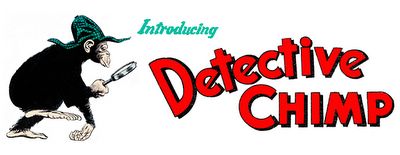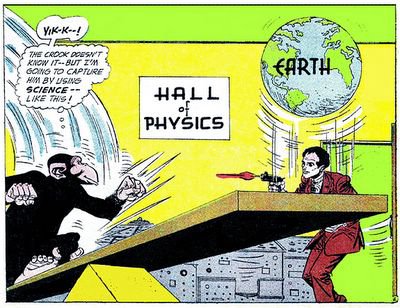
Placing confidence limits on the molecular age of the human-chimpanzee divergence. 2005. Sudhir Kumar, et al. PNAS published December 19, 2005.
ABSTRACT: Molecular clocks have been used to date the divergence of humans and chimpanzees for nearly four decades. Nonetheless, this date and its confidence interval remain to be firmly established. In an effort to generate a genomic view of the human-chimpanzee divergence, we have analyzed 167 nuclear protein-coding genes and built a reliable confidence interval around the calculated time by applying a multifactor bootstrap-resampling approach. Bayesian and maximum likelihood analyses of neutral DNA substitutions show that the human-chimpanzee divergence is close to 20% of the ape-Old World monkey (OWM) divergence. Therefore, the generally accepted range of 23.8-35 millions of years ago for the ape-OWM divergence yields a range of 4.98-7.02 millions of years ago for human-chimpanzee divergence. Thus, the older time estimates for the human-chimpanzee divergence, from molecular and paleontological studies, are unlikely to be correct. For a given the ape-OWM divergence time, the 95% confidence interval of the human-chimpanzee divergence ranges from -12% to 19% of the estimated time. Computer simulations suggest that the 95% confidence intervals obtained by using a multifactor bootstrap- resampling approach contain the true value with >95% probability, whether deviations from the molecular clock are random or correlated among lineages. Analyses revealed that the use of amino acid sequence differences is not optimal for dating human-chimpanzee divergence and that the inclusion of additional genes is unlikely to narrow the confidence interval significantly. We conclude that tests of hypotheses about the timing of human-chimpanzee divergence demand more precise fossil-based calibrations.

From the press release at EurekAlerts!:
A team of researchers has proposed new limits on the time when the most recent common ancestor of humans and their closest ape relatives -- the chimpanzees -- lived. Scientists at Arizona State and Penn State Universities have placed the time of this split between 5 and 7 million years ago -- a sharper focus than that given by the previous collection of molecular and fossil studies, which have placed the divergence anywhere from 3 to 13 million years ago.
The scientists analyzed the largest data set yet of genes that code for proteins and also used an improved computational approach that they developed, which takes into account more of the variability -- or statistical error--in the data than any other previous study.
This time is consistent with the findings of several research groups that have used the molecular-clock method to estimate the split of humans and chimpanzees since the first attempt in 1967.
"We can conclude that humans and chimpanzees probably last shared a common ancestor between five and seven million years ago," says Blair Hedges, professor of biology at Penn State. "Although this conclusion does not exclude younger or older dates as being possible, it says they are less likely to be correct."

A big thanks to ‘Dial B For Blog’ for the images of Bobo (© DC Comics)!